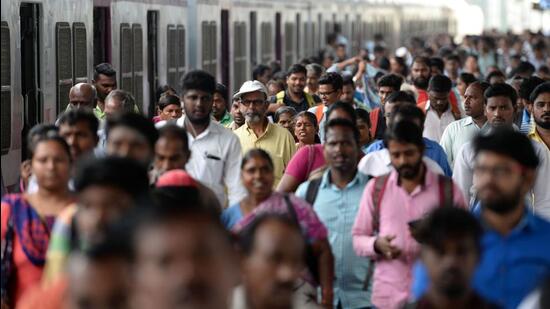Jul 15, 2024 09:02 PM IST
India’s official population data is outdated, with the 2021 Census on hold. UN report estimates 2024 population at 1.45 billion, highlighting demographic challenges and opportunities.
India does not have an official population number after 2011. The scheduled decadal Census for 2021 continues to be in suspended animation for reasons best known to the current government.

A country’s demographics, of course, do not wait for official data. India is believed to have become the world’s most populous country sometime between January and July 2023. The World Population Prospects (WPP) report released by the United Nations — it is the most authoritative demographic dataset in the world — last week put India’s 2024 population at 1.45 billion.
Unlike what a lot of population alarmists believe in India, a high population is not necessarily a bad thing for a country. In fact, India will have the biggest demographic dividend in the world in the next four decades. India’s working-age population, currently expected to be around 860 million, will keep rising till 2049 when it is expected to reach just above a billion. If skilled and employed gainfully, these working hands can change the country’s economic fortunes and indeed take us closer to the government’s stated goal of making India a developed country by 2047. But this upside can mutate into a major destabilising force, both politically and economically, if we fail to do the needful to employ them gainfully.
The WPP report gives detailed data on the age and gender composition of India’s population and also gives future projections going up to 2100. While India is expected to retain its position as the world’s most populated country, its population will start coming down sometime in the 2060s. More important than the total population are the projections of a declining working-age population from 2050 and a rising dependency ratio — share of people below or above the working age — from 2040 onwards. These two factors, when read together, tell us that we need to move fast to not just work on employing our working-age population in terms of numbers but also ensure that they are earning enough to support more people in the future than they have to do today. From a purely economic perspective, it entails increasing wages without pushing capital intensity too high which can generate headwinds for employment creation.
There are no simple answers to this challenge. But it is the most critical determinant of India’s future. Putting the best foot forward requires a deep democratic engagement with the data which is why we need the census at the earliest.
Unlock a world of Benefits with HT! From insightful newsletters to real-time news alerts and a personalized news feed – it’s all here, just a click away! –Login Now!


